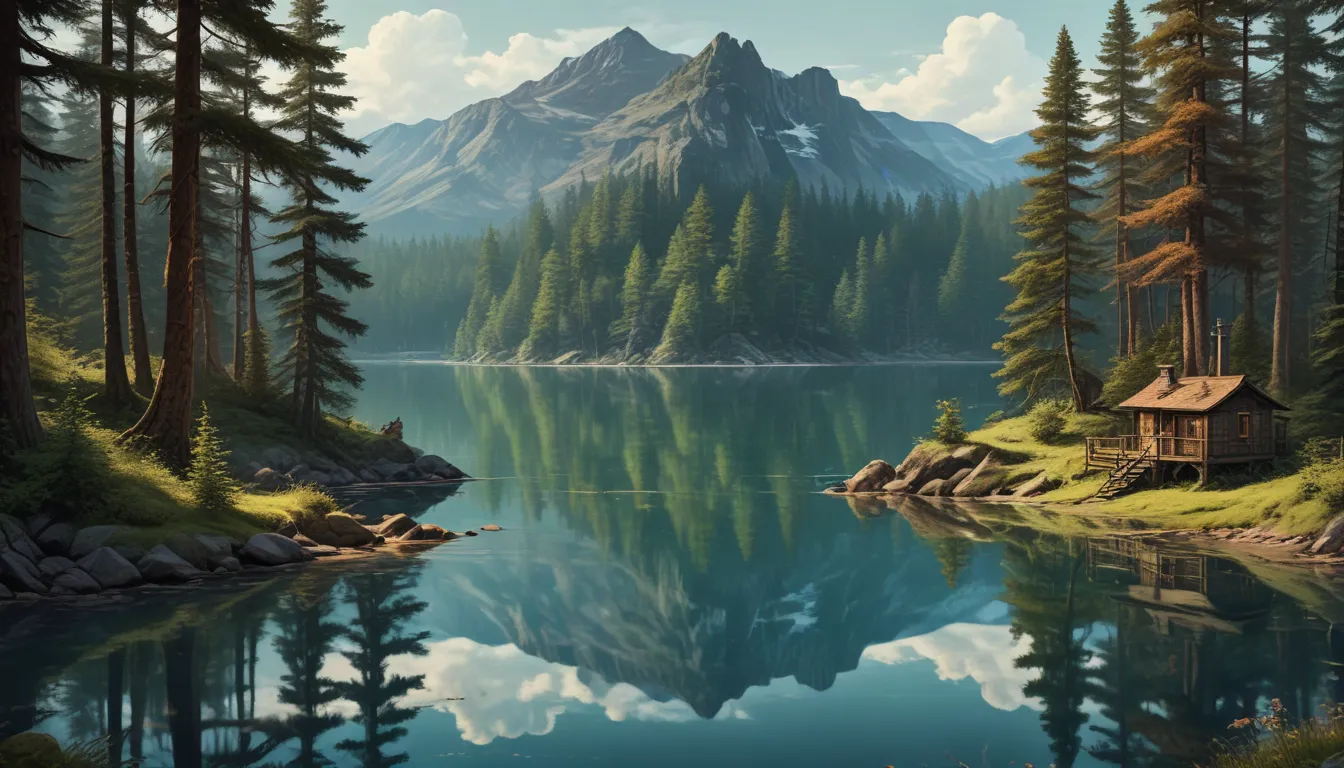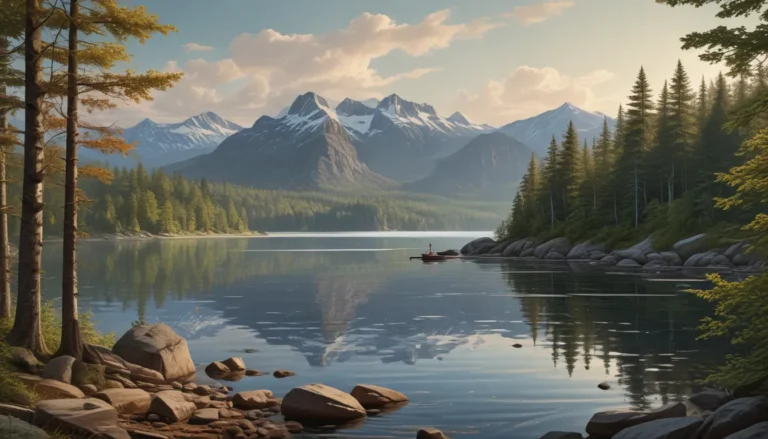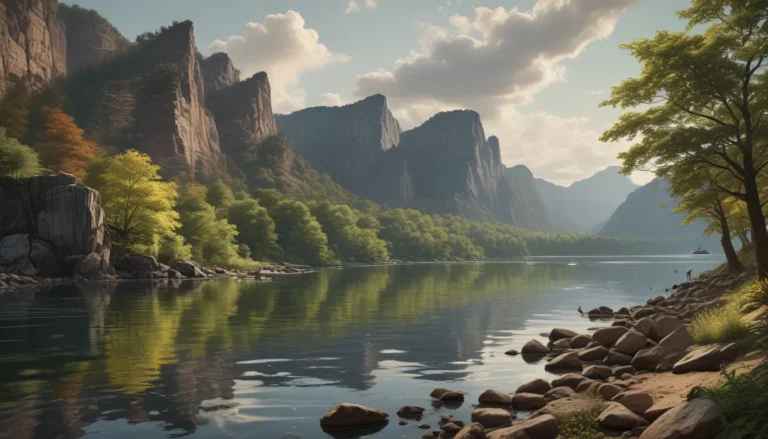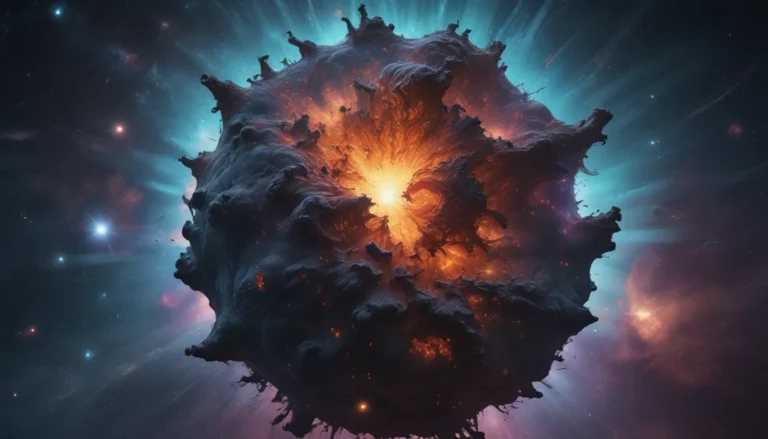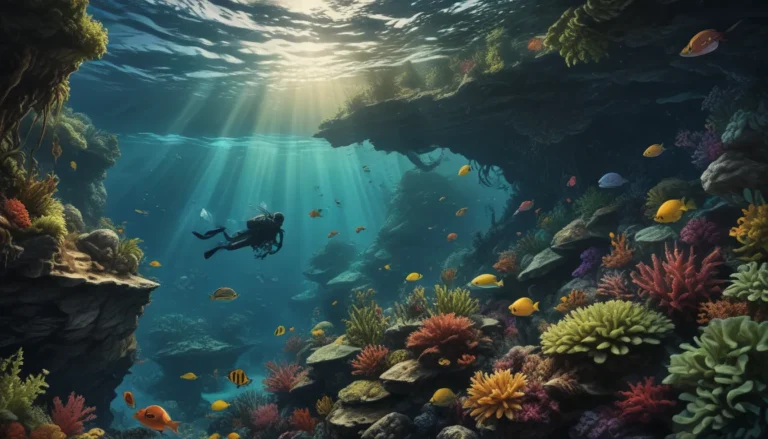The pictures we use in our articles might not show exactly what the words say. We choose these pictures to make you interested in reading more. The pictures work together with the words but don’t take their place. The words still tell you the important facts.
Lakes are more than just bodies of water; they are vibrant ecosystems teeming with life and geological wonders. From the largest and deepest lakes to the most ancient and mysterious ones, these natural formations provide a unique habitat for countless plant and animal species. In this article, we will delve into the captivating world of lakes and unveil 15 intriguing facts that will deepen your appreciation for these enchanting bodies of water.
Exploring the Diversity of Lakes
-
Lakes are bodies of water: A fundamental definition of a lake is a large body of water surrounded by land. They come in various sizes and shapes, ranging from small ponds to massive stretches of water spanning hundreds of kilometers.
-
Lakes are formed through geological processes: Lakes can be formed in different ways, such as tectonic activity creating depressions that fill with water or glaciers melting and leaving behind large cavities.
-
Lakes are important habitats: These bodies of water support a wide variety of plants and animals, forming intricate ecosystems that range from microscopic plankton to large fish and water birds.
Discovering the Global Presence of Lakes
-
Lakes can be found on every continent: While lakes are commonly associated with mountainous regions, they can be found on every continent, including Antarctica. From the vast Great Lakes in North America to secluded ones hidden in remote areas, lakes are diverse and widespread.
-
Freshwater vs. saltwater lakes: Most lakes are freshwater with low salt content, but there are saline lakes with high salt concentrations, similar to seas or oceans.
-
Dynamic nature of lakes: Lakes can change in size over time due to climate change, human interventions, or natural processes. This dynamic quality makes lakes intriguing subjects for scientific research.
Unveiling the Role of Lakes in the Environment
-
Vital role in the water cycle: Lakes act as storage units for freshwater, receiving water from precipitation and releasing it back into the environment through evaporation and outflowing rivers or streams.
-
Diverse colors: Lakes can exhibit various colors based on environmental factors like dissolved minerals, algae, and light conditions, ranging from vibrant blue to green, red, or pink.
-
Cultural and recreational significance: Lakes hold cultural importance for communities, providing a source of food, transportation, and recreational activities like fishing, boating, and swimming.
Understanding the Importance of Lakes in Society
-
Source of drinking water: Many communities rely on lakes as a primary source of drinking water, emphasizing the need for proper management and protection.
-
Water storage capacity: Some lakes have the capacity to store vast amounts of water, releasing it during dry periods to support agricultural irrigation and maintain ecosystems.
-
Unique geological features: Some lakes are known for their distinct geological features like underwater caves, sinkholes, or volcanic origins, making them intriguing sites for exploration.
Embracing the Richness of Lakes
-
Seasonal changes: Lakes undergo seasonal variations in water level, temperature, and biological activity, impacting the life within the lake and the surrounding environment.
-
Scientific research opportunities: Lakes offer scientists valuable opportunities to study ecological processes, climate change, water quality, and more due to their diverse ecosystems and dynamic nature.
-
Inspiring awe and appreciation: The beauty and tranquility of lakes have captivated humans for centuries, inspiring a sense of wonder and appreciation for the natural world.
Conclusion: Cherishing the Wonders of Lakes
In conclusion, lakes are captivating natural wonders that serve vital ecological, cultural, and recreational purposes. As habitats for diverse species, reservoirs of freshwater, and sources of inspiration, lakes play an essential role in our planet's well-being. Whether you are a nature enthusiast, a scientist, or someone who appreciates the beauty of the outdoors, exploring and learning about lakes can be a rewarding experience. Let us continue to cherish these enchanting bodies of water and strive to protect them for future generations to enjoy.
FAQs: Exploring Further
- Largest lake in the world: The Caspian Sea is the largest lake by surface area, situated between Europe and Asia.
- Formation of lakes: Lakes can form through processes like tectonic activity, volcanic activity, glaciation, and river meandering.
- Variety in lake types: Not all lakes are freshwater; some can be saline due to high salt levels.
- Threats to lakes: Lakes can dry up or disappear due to factors like climate change, excessive water usage, or geological changes.
- Importance for wildlife: Lakes are crucial habitats for a multitude of plant and animal species.
- Popular activities: Swimming, boating, fishing, kayaking, paddleboarding, and camping are popular activities in lakes.
- Role in the water cycle: Lakes play a significant role in storing and releasing freshwater into the environment.
- Man-made lakes: Humans can create lakes for purposes like water storage, hydroelectric power generation, or recreation.
- Endangered lakes: Some lakes are endangered due to pollution, habitat loss, or invasive species, necessitating protection and restoration efforts.
By exploring the world of lakes, we not only gain knowledge but also foster a deeper connection to nature. Let's continue to marvel at the mysteries and beauty of lakes and strive to protect these valuable resources for generations to come.
